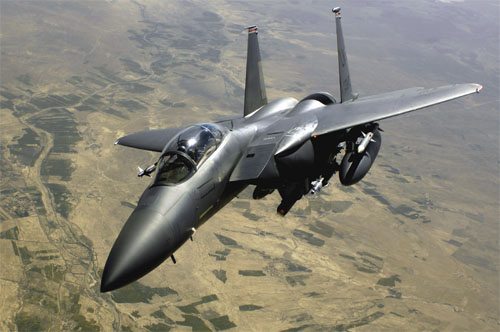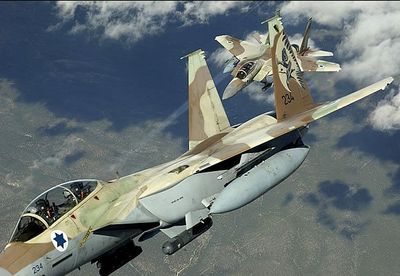During the 1960s, Soviet designers sat down to build a fighter to replace the current interceptor force of MiG-21 Fishbeds. The outline of the project demanded a fighter with high top speed, rapid acceleration, high service ceiling, advanced avionics and ability to engage the target beyond-visual range.
For the first time, maneuverability was not a top priority in a Soviet design. However, due to the outbreak of the Vietnam War, the project began to evolve accordingly. Maneuverability of the aircraft was increased, and so was G-tolerance. Electronics were fitted to prevent problems faced by US aircrafts in Vietnam.
While the MiG-23 was designed with a swing-wing design to be able to operate in all flight regimes with ease, it was not similar to F-111 or F-14 in aerodynamics. Its maneuverability is said to be inferior to the F-4 Phantom (non-slatted). The wings are shoulder mounted and can acquire swing angles of 16, 45 and 72 degree (which in reality are slightly more).
The MiG-23 has seen action in various combat theatres, mostly in the Middle East. Although its combat record does not speak highly of its capability as a fighter, one must keep in mind that this fighter was designed specifically to fulfill the role of an interceptor – as a homeland defense fighter for the USSR. Fighters like the MiG-23 find it difficult to adapt to different tactics, since they are not developed with all the qualities a fighter should have.
AVIONICS
The MiG-23 Flogger was designed to shoot down targets beyond visual range. To achieve this capability the MiG-23 was fitted with the Saphir-23 J-band multi-mode radar known as the ‘High Lark’ in NATO. The radar possesses a search range of 70 kms and a track range of 55 kms. However, the analogue radar was prone to a lot of problems. The detection ranges were unpredictable and would vary from 5kms in one set to 40 kms in some other. The liquid cooling system of the radar would stop working after 2 yrs due to anti-freeze depositions. When the radar detected a target, it did not use a scope to display the target, but instead used the brand new HUD (Heads-up Display) to create the radar picture.
The MiG-23 was the first aircraft to employ an Infrared search and track system in the Soviet Union, something that would eventually equip all future Russian fighters and become the cornerstone of Russian Air Combat strategy. The TP-23M IRST coupled with the radar makes a formidable detection system for interceptions at all altitudes, at any time of the day and in any weather conditions.
To provide ground guidance command data link to cue the aircraft in on the target, the Lazur radio command system is employed. The navigational equipment incorporates the ARC-19 automatic radio compass, RV-5R altimeter, MRP-56P marker receiver, and Polyot-1I flight/navigational system featuring the RSBN-6S short-range navigation/landing system. The radio equipment includes the R-862 VHF/UHF radio, SO-69 transponder, SPO-15 ‘Beryoza’ RWR, SRZO-2M ‘Parol’ IFF system. The airframe upper surface houses the BVP-50-60 passive countermeasures dispensers loaded with chaff and IR decoys to counter AAM and AGM homers.
The MiG-23 had a peacetime and wartime mode for the IFF system to rectify identification problems faced by the US fighters during the Vietnam War. While the system was found to be non-functional, it showed that Soviet designers had taken the details of BVR combat into account.
ARMAMENT
The MiG-23’s primary mission was interception, and it had all the qualities of a good interceptor. Its primary air-air weapon was the R-23/24 Apex missile. As per the Soviet doctrine, the Flogger carried Semi-active radar guided and Infrared guided versions of the missile. The quoted range of the missile is around 30-35 kms. Over shorter ranges, the MiG-23 could employ the AA-2 Atoll or R-60 Aphid missile.
In the air-ground mode, the MiG-23 could employ the Kh-23M command guidance AGM, 57 mm or 80 mm rocket pods, 100-500 kg bombs, UPK-23-250 cannon pods and other weapons with the total weight amounting to 2,000 tonnes.
POWER PLANT
The MiG-23MLD is powered by a single R-35 twin-shaft jet engine developing 8,550 kgf thrust at full thrust and 13,000 kgf in afterburner. The fuel is stored in three integral fuselage tanks and six wing cells totaling 4,200 litres. An 800-litre underbelly drop tank could be mounted with another two such tanks fixed under the swing-wing panels (in this case, they have to be swept back at 16 degrees). Three auxiliary fuel tanks push the plane’s total fuel capacity up to 6,600 litres.
[table id=7 /]









